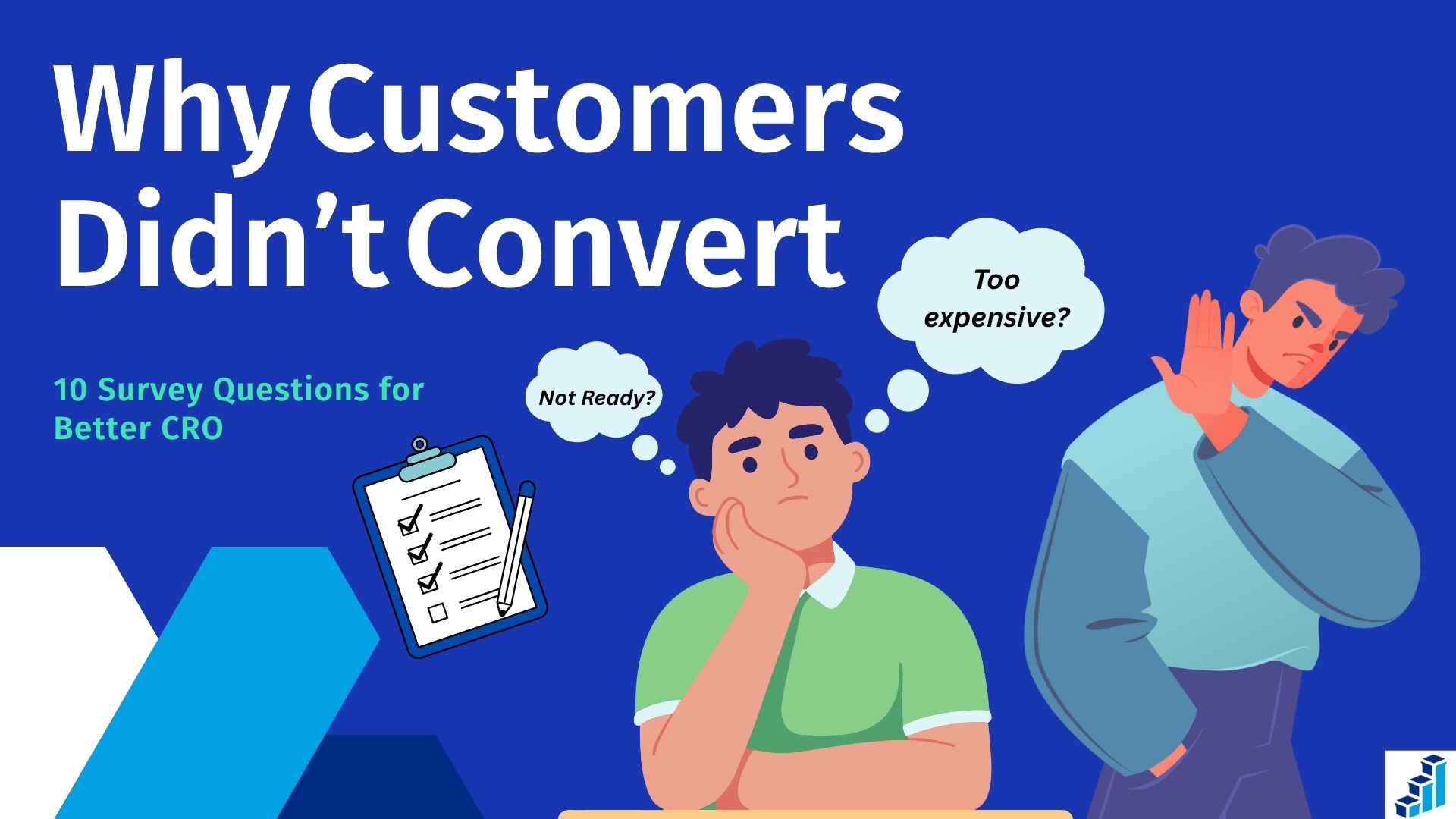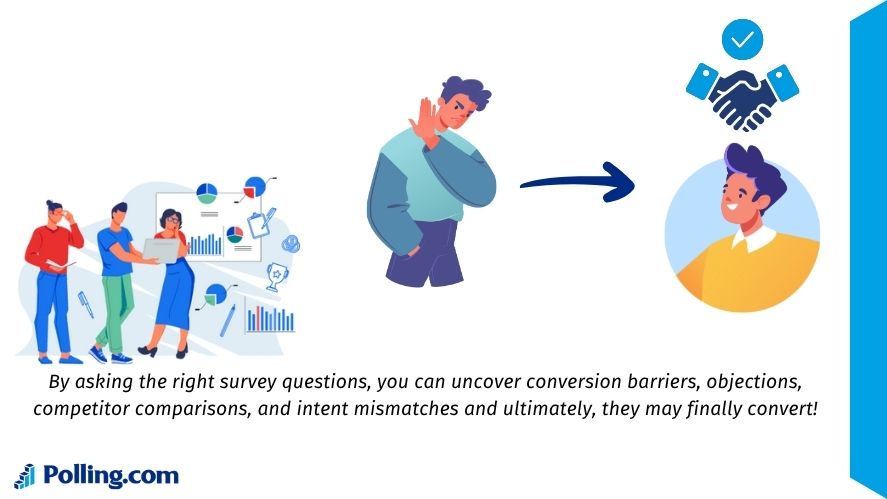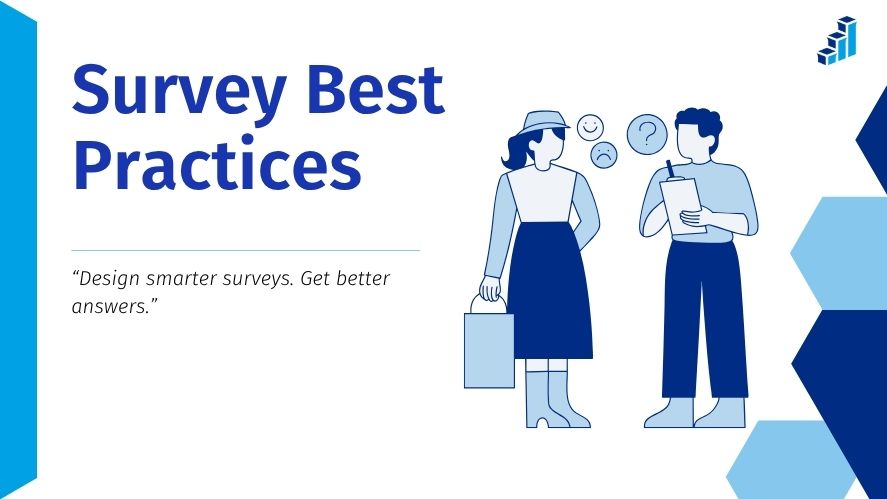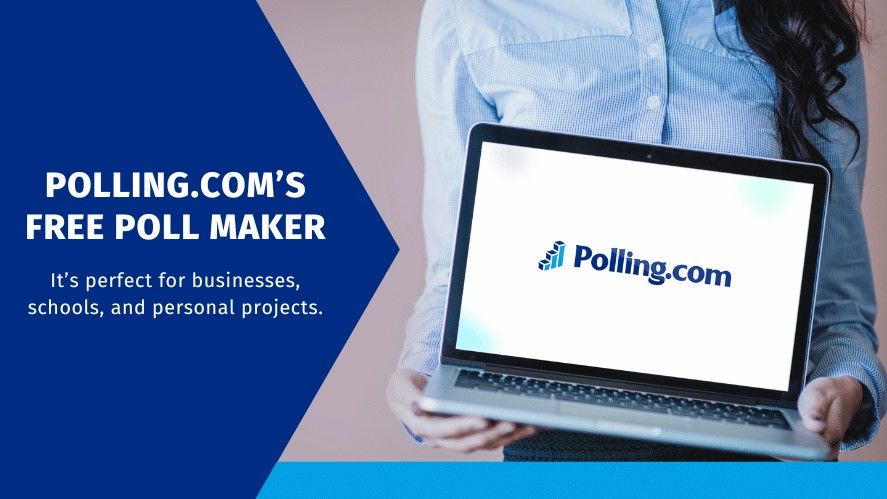
Why Customers Didn’t Convert: 10 Survey Questions for Better CRO
Every business wants more sales but what happens when people visit your site, browse your offerings, and still leave without buying? Understanding why customers didn’t convert is one of the most powerful levers you can pull to unlock meaningful conversion optimization. Yet, most companies don’t ask.
Surveying non-buyers is your secret weapon for turning silent exits into actionable insights. Why did they hesitate? What didn’t resonate? What friction points, doubts, or gaps in communication drove them away?
Using platforms like Polling.com survey platform, you can easily create, deploy, and analyze surveys specifically targeted at non-converting users. Done right, this process not only gives you answers, but also gives you direction. In this article, we’ll show you:
- Why surveying non-converters is crucial for growth
- How to target and time your surveys for maximum impact
- 10 essential survey questions that uncover real conversion barriers
- Best practices for survey design
- How to act on survey responses to boost your CRO (conversion rate optimization)
- Why Polling.com customer optimization tools are purpose-built for this task
Let’s dive into what your non-buyers are trying to tell you.
Why Surveying Non-Converters Matters

Why customers didn’t convert isn’t just a vanity curiosity. It’s a vital growth metric.
For every customer who purchases, dozens more leave. These users invested time exploring your brand. Understanding their exit points is like unlocking a hidden focus group.
What You Can Learn From Non-Converters
By asking the right survey questions, you can identify:
- Barriers to conversion: confusing UX, missing product info, poor mobile experience
- Objections: pricing, trust issues, lack of feature clarity
- Competitor comparisons: what they offered that you didn’t
- Intent mismatch: they came for one thing, found another
Real Example: Case Study from MarketingSherpa
A company ran a simple “Why didn’t you buy?” survey and discovered a surprising result: 36% of respondents were actually interested but didn’t understand the next step. Clarifying the CTA on the checkout page increased conversions by 18%. (Source)
Timing is Everything
According to insights from UX Stack Exchange, asking for feedback immediately after abandonment yields higher completion and more accurate results. Ask too late, and the user may have forgotten why they left.
How to Define Your Survey Audience & Timing
Not every visitor needs to be surveyed. Define clear criteria to identify high-value non-converters.
Who Counts as a Non-Converter?
- Added to cart but didn’t checkout
- Started signup but didn’t complete
- Spent significant time but didn’t take key actions
When and How to Ask
- Exit-intent pop-ups: Trigger when the cursor moves toward the browser bar
- Follow-up emails: For cart abandoners with an account or email address
- In-flow micro-surveys: Subtle prompts while still on-site
Platforms like the Polling.com survey platform allow you to easily segment and trigger surveys by behavior, traffic source, device type, or time on page that is ideal for deeper survey analytics.
Best Practices
- Keep the survey short (5–7 questions max)
- Use plain language
- Offer value (e.g., discount, entry into a giveaway)
- Personalize based on behavior or product category
Key Survey Questions to Ask to Discover Why Customers Didn’t Convert
Let’s get into the core: what to ask. These good survey questions are grouped by intent so you can mix and match depending on your needs. Each question is paired with its ideal type of question: multiple choice, open-ended, or rating scale.
1. Understanding Traffic & Intent
Help uncover the mismatch between what users came for vs. what they found.
- “How did you first hear about us?”
(Type: Multiple Choice)
→ Learn about marketing channels that drive interest but not conversions. - “What goal or task were you trying to accomplish when you visited our site?”
(Type: Open-ended)
→ Reveals user intent and whether your site supports it. - “Were you looking for something in particular today that you didn’t find?”
(Type: Open-ended)
→ Identifies content, product, or feature gaps.
2. Exploring Consideration & Comparison
Learn what other options users weighed and why they left you behind.
- “Did you consider any other services or products before visiting us? If yes, which ones?”
(Type: Open-ended) - “What made you choose those options rather than ours?”
(Type: Open-ended) - “What one thing would have convinced you to pick us instead?”
(Type: Open-ended)
→ Pure gold: often reveals the missing piece of your offer.
3. Identifying Friction & Objections
Find out what made users stop short—even if they were close to converting.
- “What almost stopped you from purchasing/signing up with us?”
(Type: Open-ended)
→ A “golden question” recommended by CXL. - “Did anything about our pricing, features, or wording make you uncertain?”
(Type: Open-ended) - “Was there anything unclear about our process, product, or service that slowed you down?”
(Type: Open-ended) - “On a scale of 1‑10, how easy was it to find what you were looking for?”
(Type: Rating Scale with follow-up open-ended)
4. Addressing Value & Messaging
Clarify how your offer is perceived.
- “What did you like about our offering? What did you dislike?”
(Type: Open-ended) - “Was there anything you expected that we did not provide?”
(Type: Open-ended) - “If you left without purchasing, what could we have offered to make you convert today?”
(Type: Open-ended)
5. Collecting Open-Ended Feedback
- “Is there anything else you’d like to tell us about why you didn’t convert today?”
(Type: Open-ended comment box)
These “wild card” responses often reveal insights you didn’t think to ask about. Some of your most valuable survey data will come from here.
Best Practices for Survey Design & Execution

How you ask is just as important as what you ask. Poor design leads to biased, incomplete, or unusable survey responses.
Keep It Short & Focused
- 5–7 survey questions max
- Use one question per screen for clarity
- Prioritize most actionable insights
Use the Right Types of Survey Questions
- Multiple choice: Easy to quantify, helps categorize
- Open-ended: Gives voice to customers
- Rating scales: Quantify sentiment (1–10 scale)
Using a CRO survey template built on the Polling.com survey platform can help you mix these types easily.
Incentivize Responses
Offer something small like: 5% off, bonus points, or just a thank-you email. Let users know how their input helps.
Use Clear, Non-Leading Language
Bad example:
❌ “What prevented you from seeing how great our pricing is?”
Better:
✅ “Did anything about our pricing make you hesitant to purchase?”
How to Use the Results to Improve Conversion
Conversion optimization (CRO) doesn’t stop at asking questions. It’s what you do with the answers that matters.
Turn Survey Answers into Action
- If users say “pricing is too high”: Test lower tiers, or payment plans
- If many say “features were unclear”: Update product copy or video walkthroughs
- If people mention competitors: Build a comparison page
Share Survey Data Across Teams
Use tools like Notion, Trello, or Slack to share insights across marketing, UX, product, and leadership.
Run A/B Tests Based on Survey Insights
Use your learnings to inform new test variations. Then, measure uplift in:
- Conversion rates
- Drop-off rate at key funnel stages
- Cart abandonment
Survey Again to Validate Changes
After changes go live, use Polling.com to launch follow-up surveys to validate if objections are still present.
Why Polling.com Is the Right Choice for This Work

Not all customer feedback tools are created equal. Polling.com customer optimization tools are designed specifically for CRO workflows, making them the ideal choice for non-buyer surveys.
Key Features
- Segmenting tools: Target based on behavior (cart abandoners, pricing page viewers)
- Exit-intent triggers: Catch users just before they bounce
- Integrated analytics dashboard: Correlate behavior with survey data
- Easy-to-use templates: Use or modify a proven cro survey template
- Seamless integrations: Works with GA4, Shopify, HubSpot, etc.
Example Scenario (Hypothetical)
A SaaS company used Polling.com survey platform to ask abandoners, “What nearly stopped you from signing up today?”
60% said they were unsure if the free trial required a credit card.
After clarifying “No credit card needed” on the signup page, conversions increased by 22% over 14 days.
Conclusion
Why customers didn’t convert is one of the most overlooked questions in digital marketing and one of the most impactful.
By asking the right survey questions, at the right time, to the right people, you gain a superpower: insight into the hidden thoughts of potential buyers.
Use tools like the Polling.com survey platform to easily deploy these surveys and act on the results. Remember: each unanswered question is a missed opportunity, and every survey response is a potential conversion waiting to happen.
✅ Ready to optimize your conversion strategy?
Start your non-buyer survey using Polling.com today and turn missed opportunities into loyal customers.
